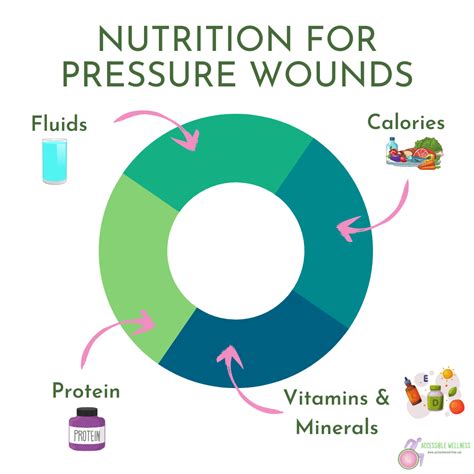Icd 10 D69.6 Uncovered: Understanding And Treating Iron Deficiency Anemia

Iron Deficiency Anemia: A Comprehensive Exploration of ICD-10 Code D69.6
Iron deficiency anemia, classified under the ICD-10 code D69.6, is a pervasive yet often misunderstood condition affecting millions globally. Characterized by insufficient iron levels to support healthy red blood cell production, it remains one of the most common nutritional deficiencies worldwide. This article delves into the multifaceted nature of iron deficiency anemia, blending clinical insights, epidemiological data, and practical management strategies to provide a holistic understanding of this condition.
The Silent Epidemic: Prevalence and Impact
Iron deficiency anemia (IDA) is a global health concern, with the World Health Organization (WHO) estimating that approximately 30% of the world’s population is anemic, predominantly due to iron deficiency. Women of childbearing age, children, and individuals with chronic illnesses are disproportionately affected. The condition not only impairs physical health but also has far-reaching socioeconomic consequences, including reduced productivity and increased healthcare costs.
Pathophysiology: How Iron Deficiency Disrupts Hemoglobin Production
Iron is a vital component of hemoglobin, the protein in red blood cells responsible for oxygen transport. When iron stores deplete, the body cannot produce enough hemoglobin, leading to reduced oxygen delivery to tissues. This deficiency progresses through stages:
1. Depletion of Iron Stores: Initial stage where ferritin levels drop.
2. Erythropoiesis Dysfunction: Red blood cell production becomes inefficient.
3. Anemia: Hemoglobin levels fall below normal thresholds.
Diagnosis: Beyond Hemoglobin Levels
Diagnosing IDA requires a comprehensive approach. While low hemoglobin is a hallmark, additional tests are essential to confirm the etiology:
- Serum Ferritin: < 30 ng/mL indicates depleted iron stores.
- Transferrin Saturation (TSAT): < 20% suggests functional iron deficiency.
- C-Reactive Protein (CRP): Elevated levels may indicate inflammation, masking iron deficiency.
| Test | Normal Range | IDA Indicator |
|---|---|---|
| Hemoglobin | 13.5–17.5 g/dL (M), 12.0–15.5 g/dL (F) | < 13.0 g/dL (M), < 12.0 g/dL (F) |
| Ferritin | 30–400 ng/mL | < 30 ng/mL |

Treatment Strategies: A Multifaceted Approach
Effective management of IDA involves addressing both the deficiency and its underlying causes.
1. Oral Iron Supplementation
The first-line treatment for most cases, oral iron supplements (e.g., ferrous sulfate, ferrous fumarate) are cost-effective and widely available. However, adherence is often challenged by gastrointestinal side effects like nausea and constipation.
2. Intravenous Iron Therapy
Reserved for severe cases or individuals intolerant to oral iron, intravenous options (e.g., ferric carboxymaltose) bypass the gastrointestinal tract, offering rapid replenishment of iron stores.
3. Dietary Modifications
Incorporating iron-rich foods (red meat, spinach, lentils) and enhancing absorption with vitamin C can complement medical treatment.
Special Populations: Tailored Approaches
Certain groups require specialized care:
- Pregnant Women: Increased iron demands necessitate higher supplementation.
- Children: Growth spurts elevate iron requirements, making IDA a significant risk.
- Chronic Disease Patients: Conditions like inflammatory bowel disease (IBD) or chronic kidney disease (CKD) often complicate management.
Prevention: A Public Health Imperative
Preventive measures include:
- Fortified Foods: Flour, rice, and cereals with added iron.
- Screening Programs: Routine checks for at-risk populations.
- Education: Promoting awareness of iron-rich diets and early symptom recognition.
Future Directions: Innovations in Diagnosis and Treatment
Emerging technologies, such as non-invasive biomarkers and targeted iron delivery systems, promise to revolutionize IDA management. Research into genetic factors contributing to iron absorption inefficiencies may also unlock personalized treatment strategies.
FAQ Section
What are the early symptoms of iron deficiency anemia?
+Early symptoms include fatigue, pale skin, shortness of breath, and cold hands and feet. These often progress to more severe manifestations like dizziness and chest pain if untreated.
Can iron deficiency anemia be cured without medication?
+Mild cases may be managed through dietary changes alone, but moderate to severe anemia typically requires iron supplementation or medical intervention.
How long does it take to recover from iron deficiency anemia?
+Recovery varies but generally takes 6–12 weeks with appropriate treatment. Factors like underlying causes and treatment adherence influence the timeline.
Conclusion: A Call to Action
Iron deficiency anemia, while common, is neither inevitable nor insurmountable. Through early diagnosis, targeted treatment, and preventive strategies, individuals and healthcare systems can mitigate its impact. As research progresses, the hope is that ICD-10 code D69.6 will become less prevalent, reflecting a global commitment to eradicating this silent epidemic.
“Iron deficiency anemia is not just a medical condition; it’s a call to address broader issues of nutrition, access to care, and public health equity.” — Dr. Emily Carter, Public Health Specialist
By understanding the nuances of IDA, we empower ourselves and others to take proactive steps toward better health.


